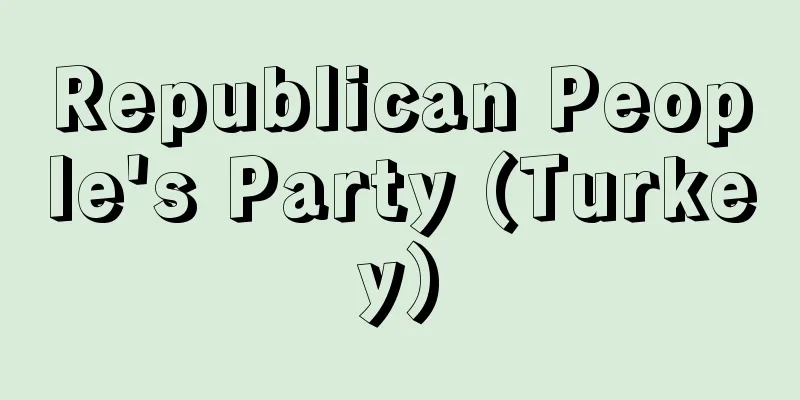Republican People's Party (Turkey)

|
The ideology that led the revolution was based on a Turkish nationalism based on local roots, which aimed to save the Turks living in Anatolia by eliminating Ottomanism, Pan-Islamism, and Turanism from the Ottoman Empire. However, many of the participants in the revolution viewed it as an Islamic religious movement, and after liberation was achieved, conservative ulema (religious leaders and scholars), intellectuals, and military personnel opposed the People's Party (founded in September 1923, renamed the Republican People's Party in November 1924) led by Kemal Atatürk, and insisted on the protection of the caliphate. The reforms by the People's Party became even more secular. The military aspects of the Homeland Liberation Movement were led by young officers and professional soldiers, but the ulema, landlords, and ethnic capitalists played a major role in the economic and social organization of the movement. From the Republic of Turkey ...Turkey, which based its foreign policy on the slogan "Peace at home, peace without," maintained near neutrality during World War II and, after the war, joined NATO and remained in the Western camp. *Some of the terminology used to refer to the Republican People's Party (Türkiye) is listed below. Source | Heibonsha World Encyclopedia 2nd Edition | Information |
|
… 革命を導いたイデオロギーは,オスマン帝国時代のオスマン主義,パン・イスラム主義,トゥラン主義を清算してアナトリアに住むトルコ人の救済を目的とした,地縁的なトルコ民族主義に求められた。しかし革命に参加した人々の多くは,これをイスラムの宗教運動としてとらえていたために,解放達成後,保守的なウラマー(宗教指導者・学者),知識人,軍人が,ケマル・アタチュルクを党首とする人民党(1923年9月創立,24年11月共和人民党と改称)と対立してカリフ制擁護を主張すると,人民党による改革は,いっそう非宗教的傾向を強めた。祖国解放運動の軍事的側面は青年将校,職業軍人が指導したが,運動の経済的・社会的組織化には,ウラマー,地主,民族資本家が大きな役割を果たした。… 【トルコ共和国】より…〈内に平和を,外に平和を〉のスローガンを外交政策の基本としたトルコは,第2次世界大戦中ほぼ中立を維持し,戦後はNATOに加盟して西側陣営にとどまった。 ※「共和人民党(トルコ)」について言及している用語解説の一部を掲載しています。 出典|株式会社平凡社世界大百科事典 第2版について | 情報 |
<<: Kyowa Youth Group - Kyowa Youth Group
>>: Republican Central Committee
Recommend
La Serena (English spelling)
It is the capital of the 4th region in central Chi...
Atrophy - Atrophy
This disease causes the leaves and stems of crops...
Kanshu - Giant Bracken
Plant. Evergreen perennial plant of the Dryopteris...
Emblemata - Emblemata
…The most famous example of this is the 13th-cent...
Umegatani Totaro - Umegatani Totaro
The 15th Yokozuna. Born in Shiwa Village, Joza Co...
Rent
…A parish is the pastoral area of a parish prie...
Location Contract - Basyoukeoi
A method of Ezo management used by the Matsumae Do...
Augustine of Canterbury (English spelling)
?‐604 Augustine was the first Archbishop of Canter...
Bishamonten
A Buddhist guardian deity. The Sanskrit word Vaiś...
Tlemcen (English spelling)
A city in northwestern Algeria. The capital of Tle...
Theory of Japanese and Korean common ancestry
This assertion states that the Japanese and Korean...
Atypical -
... The above classification is valid because can...
Marcel Breuer
Hungarian-born American architect and furniture d...
Abe River alluvial fan
…The Shimizu Plain, which spreads along the Tomoe...
The time of the observation of the image - Kanshojuji (English)
This refers to a method of observing astronomy and...









